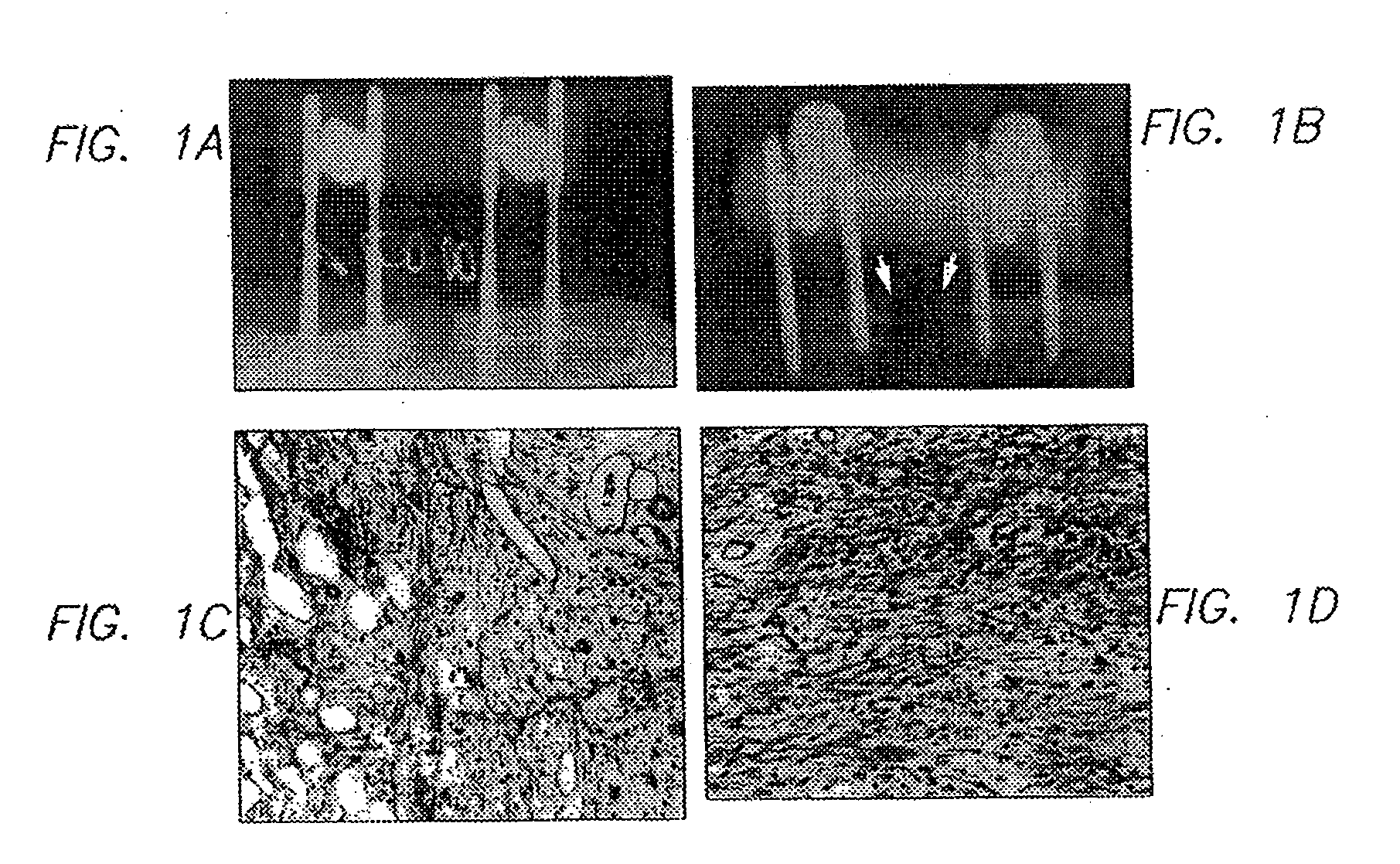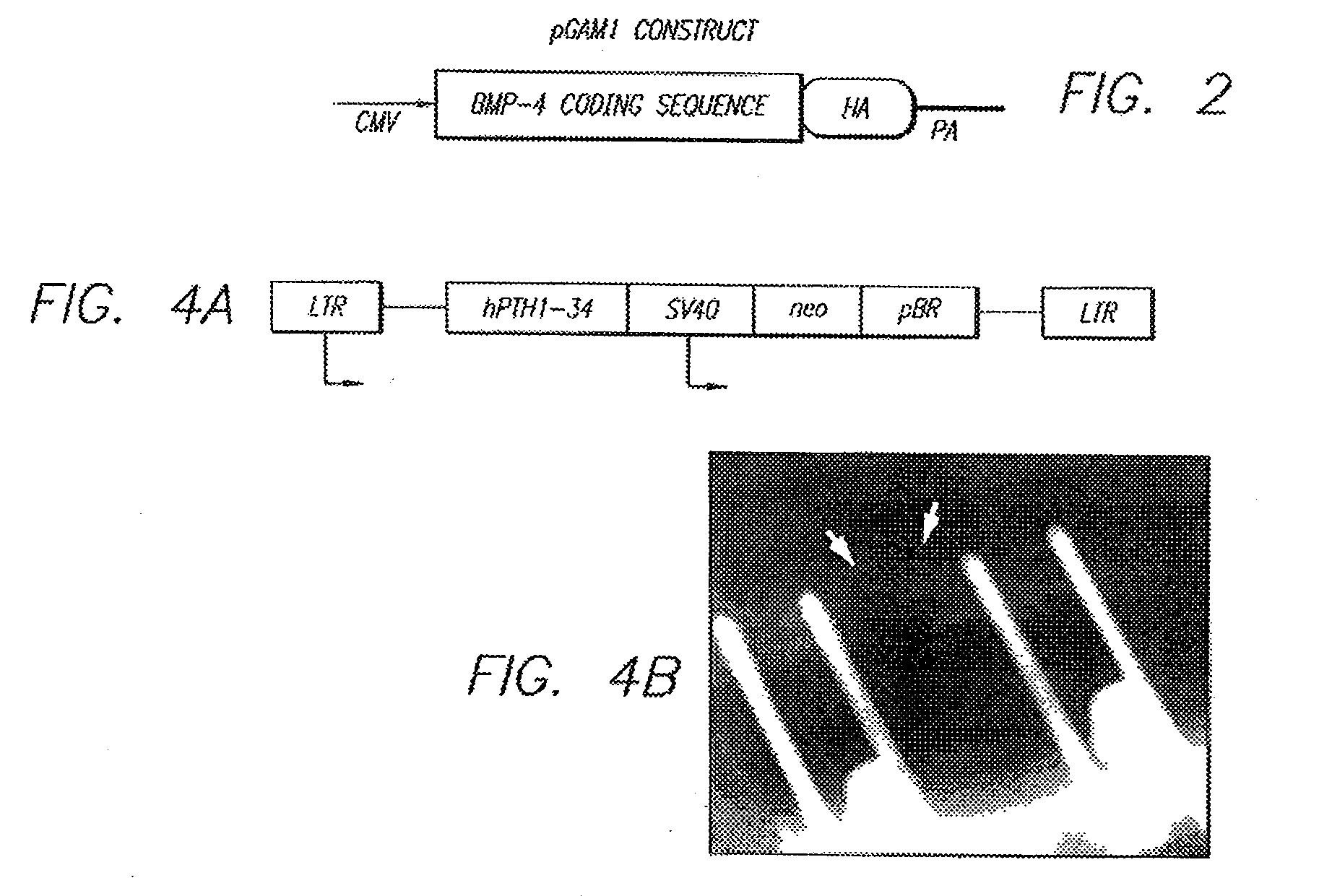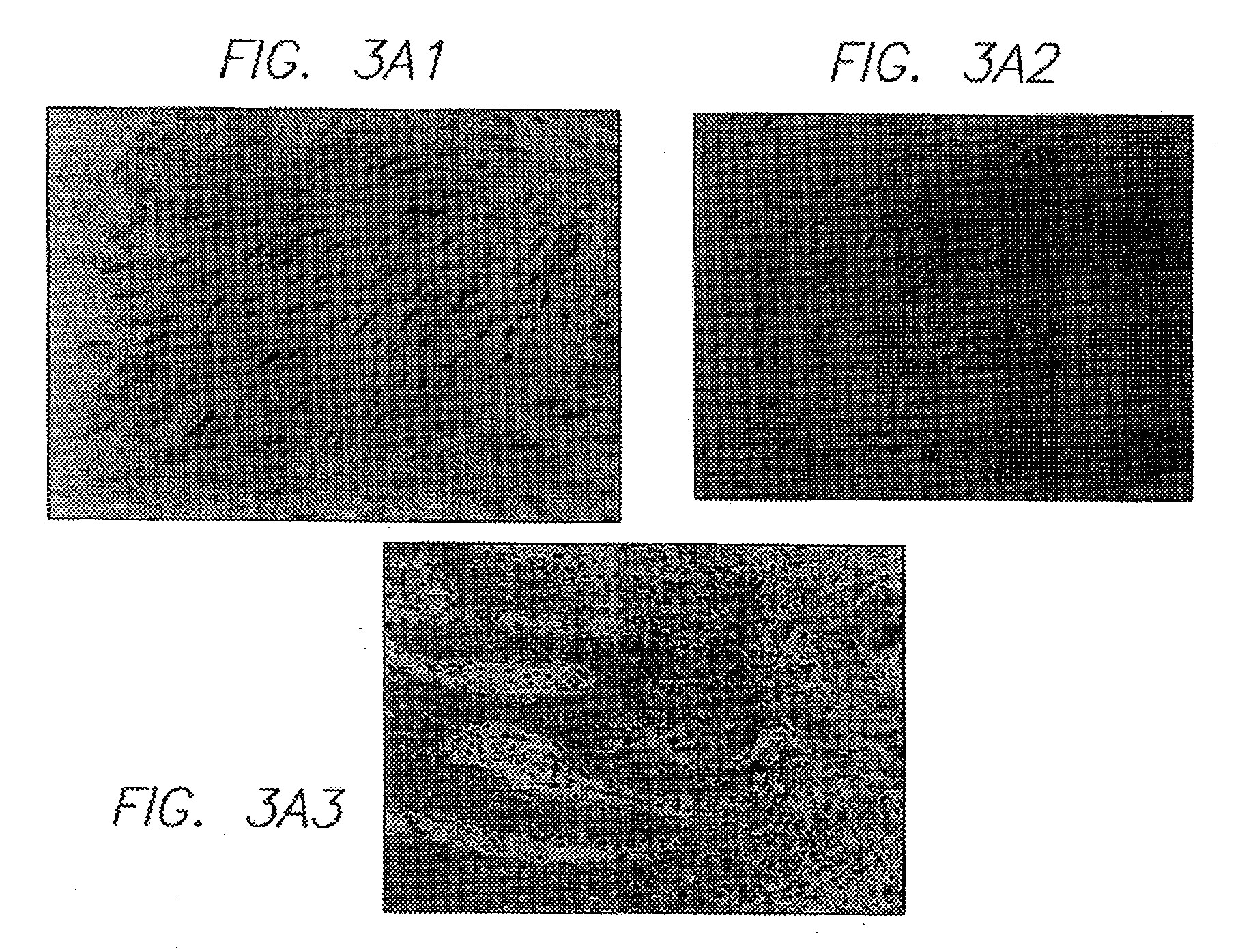In vivo gene transfer methods for wound healing
a gene transfer and wound healing technology, applied in the field of in vivo gene transfer methods for wound healing, can solve the problems of unwounded tissue serious unwanted side effects, cumbersome storage and use, and the inability to purify and/or recombinantly produce therapeutic proteins, etc., and achieve the effect of enhancing wound healing
- Summary
- Abstract
- Description
- Claims
- Application Information
AI Technical Summary
Benefits of technology
Problems solved by technology
Method used
Image
Examples
Embodiment Construction
[0039]The present invention relates to an in vivo method for presentation and transfer of DNA into mammalian repair cells for the purpose of expressing therapeutic agents. The method of the invention involves implanting or placing gene activated matrices into a fresh wound site.
[0040]Wound healing is usually a coordinated, stereotyped sequence of events that includes (a) tissue disruption and loss of normal tissue architecture; (b) cell necrosis and hemorrhage; hemostasis (clot formation); (c) infiltration of segmented and mononuclear inflammatory cells, with vascular congestion and tissue edema; (d) dissolution of the clot as well as damaged cells and tissues by mononuclear cells (macrophages) (e) formation of granulation tissue (fibroplasia and angiogenesis). This sequence of cellular events has been observed in wounds from all tissues and organs generated in a large number of mammalian species (Gailet et al., 1994, Curr. Opin. Cell. Biol. 6:717-725). Therefore, the cellular seque...
PUM
| Property | Measurement | Unit |
|---|---|---|
| length | aaaaa | aaaaa |
| pH | aaaaa | aaaaa |
| thick | aaaaa | aaaaa |
Abstract
Description
Claims
Application Information
 Login to View More
Login to View More - R&D
- Intellectual Property
- Life Sciences
- Materials
- Tech Scout
- Unparalleled Data Quality
- Higher Quality Content
- 60% Fewer Hallucinations
Browse by: Latest US Patents, China's latest patents, Technical Efficacy Thesaurus, Application Domain, Technology Topic, Popular Technical Reports.
© 2025 PatSnap. All rights reserved.Legal|Privacy policy|Modern Slavery Act Transparency Statement|Sitemap|About US| Contact US: help@patsnap.com



